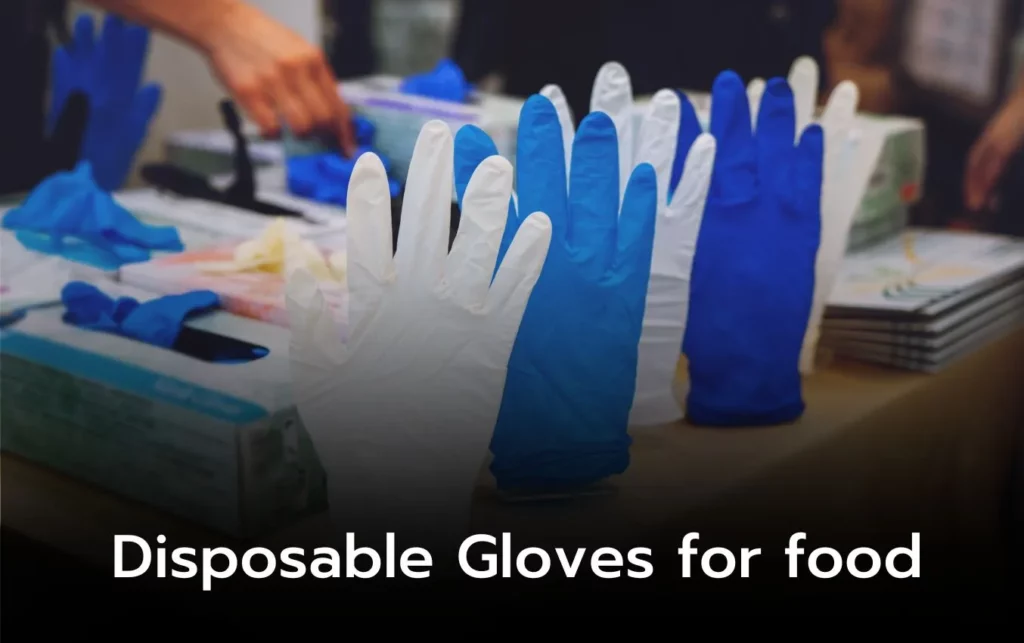It’s vital to understand the safety considerations when it comes to using disposable gloves for food handling. Not all gloves are the same. Different factors like material, contamination risk, rules, and best practices are important for deciding if they are safe for handling food. In this blog post, we investigate into the question of whether all disposable gloves are food safe, highlighting key insights and considerations for ensuring food safety in handling practices.
Table of Contents
- Microbial Contamination on Gloves
- Risk of Contamination
- Effectiveness of Disposable Gloves
- Chemical Migration from Gloves
- Chemicals Released by NBR Gloves
- Potential Health Risks
- Effectiveness of Gloves in Preventing Cross-Contamination
- Barriers to Bacterial Cross-Contamination
- Influence of Material and Hydrophobicity
- Limitations and Proper Use of Gloves
- Risk of Punctures and Microbial Accumulation
- Importance of Proper Glove Use and Hand Hygiene
Microbial Contamination on Gloves

Risk of Contamination
The safety of disposable gloves in food handling is critical as they can become contaminated with microorganisms like Listeria monocytogenes and Bacillus cereus, potentially transferring to food. Before using gloves, it’s vital to consider this risk and take necessary precautions to prevent cross-contamination.
Effectiveness of Disposable Gloves
Using gloves greatly reduces the amount of bacteria on hands, compared to not using gloves or using gloves that can be used again. This helps make food safer when proper manufacturing practices are followed. Considering that disposable gloves act as barriers to bacterial cross-contamination, they are a valuable tool in preventing the transfer of pathogens, especially in food handling settings.
Plus, studies have shown that nitrile gloves generally have lower transfer rates of bacteria compared to other materials, making them a preferred choice for food safety. Proper use of disposable gloves, combined with regular glove changes and hand hygiene practices, can further enhance their effectiveness in preventing cross-contamination.
Chemical Migration from Gloves

Chemicals Released by NBR Gloves
The safety of disposable gloves in food handling is a major concern, with NBR gloves found to release chemicals such as plasticizers and antioxidants, posing a potential risk of migration into food. Some of these chemicals, like DEHP and ZDBC, have been associated with endocrine-disruptive effects.
Potential Health Risks
One important consideration is the potential health risks posed by the chemicals released from gloves. Studies have shown that some chemicals present in NBR gloves, like BBBC, can have negative impacts on human health, highlighting the importance of choosing gloves wisely to minimize health risks in food handling. Migration between gloves and food contact surfaces can introduce harmful chemicals into the food chain, leading to potential health risks for consumers. Therefore, it is crucial to be aware of the materials used in disposable gloves and their potential for chemical migration. When deciding on gloves for food handling, prioritize materials with minimal risk of chemical transfer to ensure the safety of the food being prepared and served.
Effectiveness of Gloves in Preventing Cross-Contamination
Barriers to Bacterial Cross-Contamination
Any gloves, when used properly, act as barriers to bacterial cross-contamination between hands and food. Studies have shown that disposable gloves significantly reduce the transfer rates of bacteria like Enterobacter aerogenes compared to bare hands, making them a crucial tool in maintaining food safety.
Influence of Material and Hydrophobicity
CrossContamination. Gloves’ material and hydrophobicity play a key role in preventing cross-contamination. Nitrile gloves, known for their lower transfer rates of bacteria, are generally more effective in ensuring food safety compared to other materials. This highlights the importance of selecting the right type of gloves for food handling to minimize the risk of contamination.
Limitations and Proper Use of Gloves
Risk of Punctures and Microbial Accumulation
Gloves can become a source of contamination if they are punctured or improperly used. Factors such as wearing jewelry or artificial nails can increase the risk of glove punctures and microbial accumulation. Long-term use of gloves can create warm, moist conditions that promote microbial proliferation, emphasizing the need for proper glove use and hand hygiene to prevent cross-contamination.
Importance of Proper Glove Use and Hand Hygiene
Limitations in handling disposable gloves also include the possibility of punctures, especially when worn over jewelry or artificial nails. This can lead to microbial accumulation and compromise food safety. It is crucial to follow proper glove use and hand hygiene practices diligently to minimize the risk of contamination. Regular changes of gloves and adherence to strict handwashing routines are imperative to ensure food safety.
From the information above, it is evident that not all disposable gloves are inherently food-safe. Choosing the right material, ensuring compliance with food safety regulations, and following best practices are crucial steps to maintain food safety. Nitrile gloves are generally a reliable choice for food handling due to their properties. Remember to prioritize safety and hygiene when selecting and using disposable gloves to prevent contamination and ensure the safety of your food handling practices.
